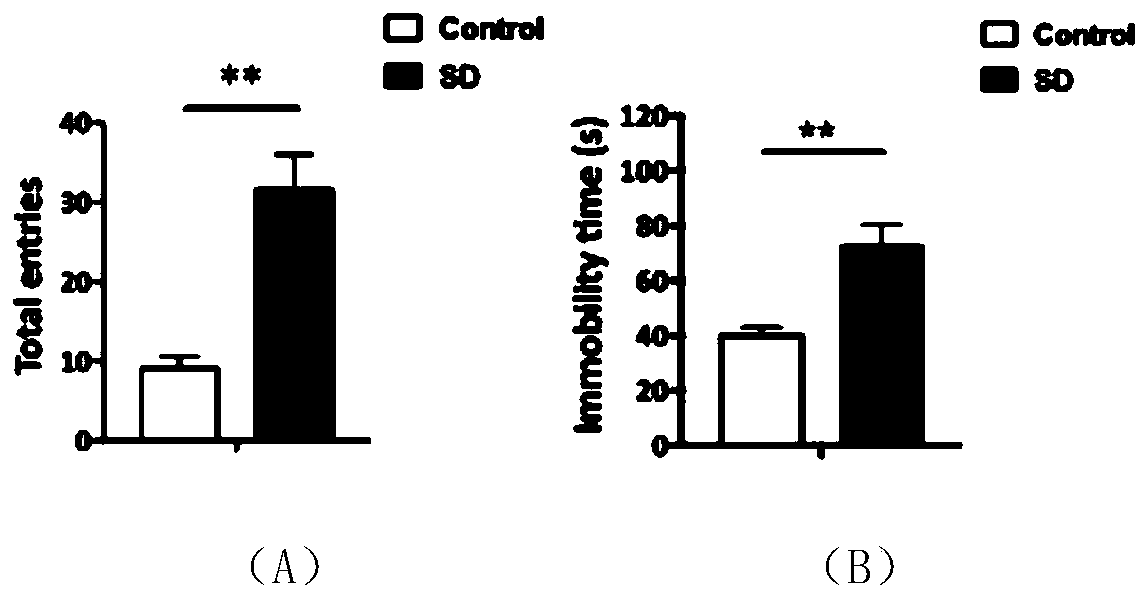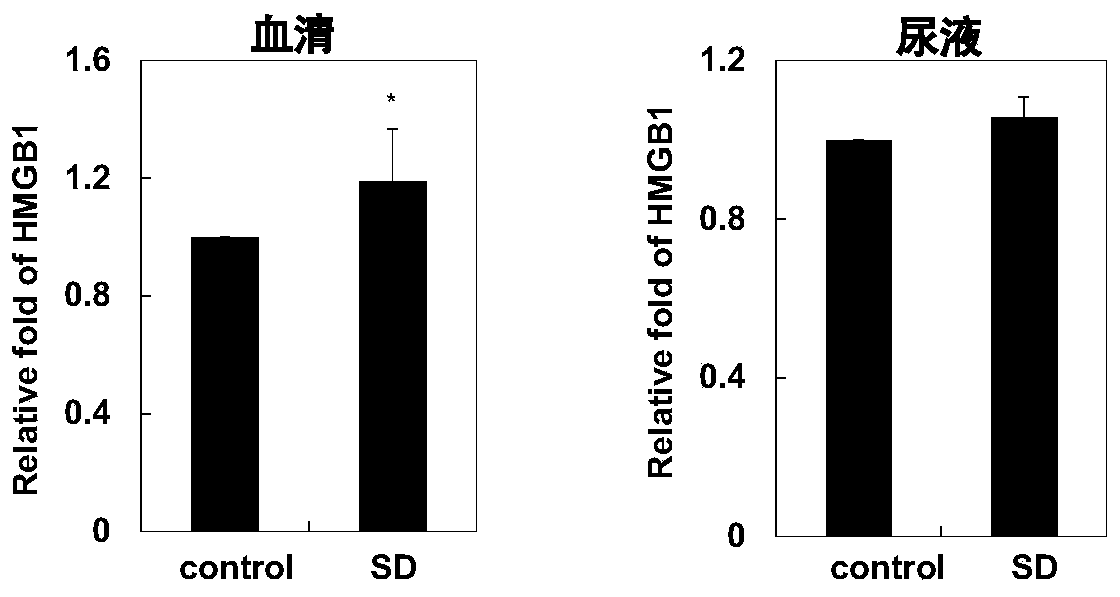Biomarker for circadian rhythm sleep disorders
A biomarker, circadian rhythm technology, applied in the field of circadian rhythm sleep disorder biomarkers
- Summary
- Abstract
- Description
- Claims
- Application Information
AI Technical Summary
Problems solved by technology
Method used
Image
Examples
Embodiment 1
[0037] Embodiment 1 Rat sleep deprivation model establishment
[0038] 1. Preparation of rat sleep deprivation model
[0039] Male SD rats (body weight 240g±20g) were placed in a sleep deprivation apparatus and kept awake for 72 hours. The rats were free to ingest food and water, and had a circadian rhythm of 12 hours a day to prepare a rat sleep deprivation model.
[0040] 2. Behavioral evaluation of anxiety in rats
[0041] 1. Elevated Plus Maze
[0042] Place the rat in the center of the maze with its head facing open arms, and the observer is at least 1m away from the center of the maze. The number of times the rats entered the open arm and the closed arm and the residence time in the two arms during the experimental period (5 minutes) were recorded. Calculate the percentages of the number of times rats entered the open arm and the time spent in the open arm to the total number of times (the sum of the number of times they entered the open arm and the closed arm) and th...
Embodiment 2
[0046] The ELISA detection method of embodiment 2 rat serum HMGB1
[0047] The SD rats were placed in a sleep deprivation apparatus and kept awake for 72 hours to observe their anxiety-like behavioral characteristics. Plasma and urine were collected, and the content of HMGB1 in serum and urine was detected by ELISA method. The result is as figure 2As shown, the content of HMGB1 in the serum and urine of sleep-deprived rats was significantly increased.
[0048] The detection method is:
Embodiment 3
[0050] Example 3 ELISA detection method of HMGB1 in patient serum
[0051] At the same time, the plasma and urine of 31 subjects with sleep disorders were collected (General Hospital of the People's Liberation Army), and the changes of HMGB1 were detected by ELISA.
[0052] The HMGB1 protein concentration in the serum of patients with sleep disorders was quantified, and the HMGB1-specific antibody was adsorbed on the surface of the solid phase carrier by enzyme-linked immunosorbent assay (ELISA), so that the enzyme-labeled antigen-antibody reaction was carried out on the solid phase surface. . Antibodies that bind to HMGB1 are known and prepared in the art, including the production of polyclonal antibodies against HMGB1 and monoclonal antibodies against specific fragments of HMGB1. A commercially available HMGB1 antibody is a rabbit polyclonal antibody to human HMGB1 (Abcam, Cat. No. ab18256), directed against a KLH-conjugated synthetic peptide derived from residue 150 of hum...
PUM
 Login to View More
Login to View More Abstract
Description
Claims
Application Information
 Login to View More
Login to View More - R&D
- Intellectual Property
- Life Sciences
- Materials
- Tech Scout
- Unparalleled Data Quality
- Higher Quality Content
- 60% Fewer Hallucinations
Browse by: Latest US Patents, China's latest patents, Technical Efficacy Thesaurus, Application Domain, Technology Topic, Popular Technical Reports.
© 2025 PatSnap. All rights reserved.Legal|Privacy policy|Modern Slavery Act Transparency Statement|Sitemap|About US| Contact US: help@patsnap.com



